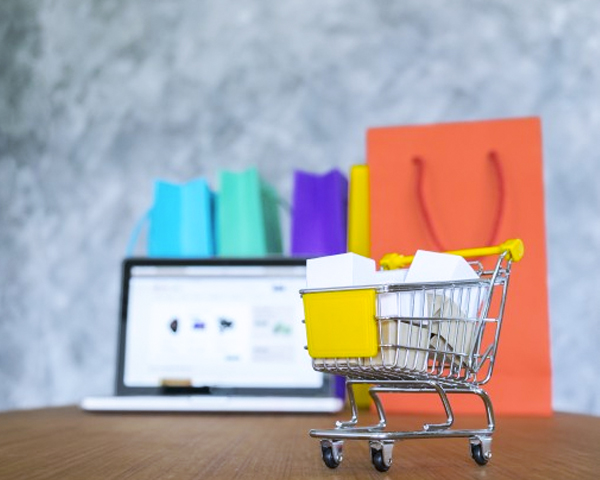Social Media Are Expanding Their Scope to Online Shopping However Payments Will Continue to Remain COD


The popularity of online shopping is undebatable. With close to 329.1 million people projected to buy goods and services online in India by 2020, it has undoubtedly transformed the way we all shop. However, in spite of the convenience, the low operational costs, and the improved quality of service that eCommerce offers, it still lags behind in offering an experience similar to in-store shopping – a kind of social experience that binds people with similar tastes, and brand loyalties together. That’s where social media or social commerce has started playing a role, with popular brands displaying products on popular social media sites like Facebook and Twitter, and incorporating a “buy now” button. The result? More brand awareness, more people talking about your product/company, more peer recommendations and views, and, therefore, more sales.
Issues with Social Commerce
As social commerce gains popularity across the world, customers expect payment and delivery of goods to be easy, efficient, and safe. But the scepticism and nervousness around social media payments and the issues associated with them are widespread:
[nz_il type=”circle” icon=”icon-checkmark” icon_color=”#ffffff” background_color=”#004fb1″ ]
- Security: Stolen or hacked cards are often used to make multiple purchases, wanting products to be shipped internationally or in bulk. As customers enter their card details for an online purchase, what is the guarantee that card details will not be misused?
- Customer Support: For customers who are new to online shopping, or have just got their first credit card often err while entering the card details. If a payment does not go through, how easy is it to get in touch with a grievance redressal team, and how soon does the issue get resolved?
- Privacy Concerns: For many consumers, social media means less privacy. They are worried about their personal details and date being captured and used for profit. It will need a lot more investment in education and infrastructure to assuage these concerns.
- Connectivity Issues: Although the quality of Internet services has improved drastically, there are rare occasions where customers face connectivity issues just as they are making an online payment. What happens to an online purchase if there is intermittent network connectivity, or if the payment gateway is loaded?
[/nz_il]
The Preference for Cash-on-Delivery
With India predominantly being a cash economy, customers still prefer to buy products using the cash-on-delivery or COD payment option. Other payment modes like Net Banking, Credit & Debit Cards and e-wallets combined contribute to a meagre percentage. The reasons for this could be many:
[nz_il type=”circle” icon=”icon-checkmark” icon_color=”#ffffff” background_color=”#004fb1″ ]
- Fear of online payment not going through
- Internet connectivity issues
- Lack of trust in social payments or lack of trust in a brand
- Fear of not receiving the product delivery
- The joy in ordering anything, especially with a low bank balance
[/nz_il]
Improving Trust in Digital Payments
Social commerce transactions trigger complex automated processes that involve an array of players like payment gateways and banks; there are several concerns in the minds of the consumers when it comes to safeguarding their financial information and preventing security issues. This has created a demand for innovative technology-enabled solutions that take away the hassles of cash management in COD for the retailer and the logistics company while ensuring utmost satisfaction and enhanced convenience for the customer.
What customers really want is the convenience of paying digitally on delivery – using a credit/debit card, mobile wallet, UPI, Aadhaar, Bharat QR, or Net Banking account – but without the hassle of cash. A payment method that enables customers to enjoy all the benefits of COD, plus get the flexibility of not keeping cash at home, and not having to be physically present to receive goods. Additionally, they also want to enjoy all benefits that their bank offers – reward points, cash back, and more.
Ensuring a Comfortable E-Commerce Journey
The exploding adoption of smartphones and the proliferation of social media has taken the eCommerce industry to a whole new level: statistics suggest that the online retail sector in India is expected to be a whopping $1 trillion market by 2020! This massive growth fuels the need to process payments faster and more efficiently through ever-evolving channels, address risks of non-payments or returns while ensuring customer satisfaction.
“Even as the preference to pay by cash remains, the digital payments infrastructure is evolving to address the security, convenience, and accessibility concerns of customers. Customers want to combine the assurance and flexibility that comes with Cash on Delivery option AND the convenience of digital payments. I feel that eCommerce companies will need to be ready for that,” says Jose Thattil, CEO and Co-Founder, Phi Commerce Private Limited.
This article by us appeared in VAR India.
It can be read here:
Link: http://www.varindia.com/news/social-media-are-expanding-their-scope-to-online-shopping-however-payments-will-continue-to-remain-cod#sthash.wigQsUCX.dpbs